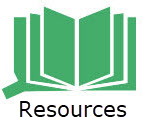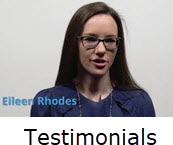Open Education Resources

Welcome to GoOpen CT, a movement of teachers, professors, students, leaders, and policy makers backed by the Commission and embracing the use of open educational resources (OER) across Connecticut. Consider OER to mean “Free and openly licensed educational materials that can be used for teaching, learning, research, and other purposes” (Creative Commons definition). In practical terms, OER may include textbooks, streamed or recorded lectures (including “flipped” classroom videos), course content, tests and assessments, lesson plans, unit plans, etc. Are you just learning about, familiar with, or even masterful at creating OER? We want to hear from you. Share your thoughts and resources using the hashtag #GoOpenCT.
OER in Connecticut
 Based on the feedback of hundreds of education leaders, administrators, professors, and educators, the report "Open Education Resources in Connecticut: Survey Results and Opportunities for Connecticut Schools and Universities" provides insights into the use and promise of OER in our state. Many have already embraced the creation and curation of high-quality digital learning materials and are eager to share their content with other educators. Doing so requires professional development, technology, and — perhaps most importantly — leadership support. Gain insights from the executive summary, detailed survey results, and areas of opportunity to see how OER can benefit Connecticut's students, educators, and institutions.
Based on the feedback of hundreds of education leaders, administrators, professors, and educators, the report "Open Education Resources in Connecticut: Survey Results and Opportunities for Connecticut Schools and Universities" provides insights into the use and promise of OER in our state. Many have already embraced the creation and curation of high-quality digital learning materials and are eager to share their content with other educators. Doing so requires professional development, technology, and — perhaps most importantly — leadership support. Gain insights from the executive summary, detailed survey results, and areas of opportunity to see how OER can benefit Connecticut's students, educators, and institutions.
Resources
We encourage you to explore dozens of OER planning and content resources for educators, administrators, and policy makers. And visit our Testimonials page to hear firsthand how Connecticut schools, colleges, and libraries are benefiting from OER.
GoOpenCT Launch
The Commission for Educational Technology has made Connecticut one of 20 "GoOpen" states, backing the OER movement to provide the following benefits educators, students, and institutions:
- Equity of Access: Use of OER widens the availability of teaching and learning materials, regardless of budget limitations. Access to tens of millions of open textbooks, courses, and other learning resources levels the field for educators and learners everywhere.
- Relevancy and Currency: Printed textbooks age quickly, yet digital texts can be remixed and updated by multiple authors.
- Teacher and Student Voice: Educators need not be limited to the constraints of static textbooks or published curriculum materials but work collaboratively to create and share high-quality, standards-aligned learning materials tailored to the specific needs of their courses and students. Students can — and through resources such as Khan Academy, already do — use open resources to supplement classroom instruction and develop agency for their own lifelong learning.
- Cost Savings: K – 12 schools can save on the cost of instructional materials (e.g., textbooks). In higher education, use of free and low-cost materials allows more students, especially the most disadvantaged, to stay in school and complete degree programs.
- Technology Investment: In Connecticut, an estimated 70 percent of high schools and 50 percent of middle schools have 1:1 computing programs. Our flagship Connecticut Education Network (CEN) connects every district to high-speed broadband. The use of OER allows schools to maximize their investment in those technology resources by allowing students to use online learning materials.
- Connection with Other Educators: As a practice, the use of OER is inherently collaborative, encouraging teachers and professors to work together to create and update high-quality learning materials.
>> Back to Top


